Consolidated B-32 Dominator Bomber
History and Development of the B-32 Dominator
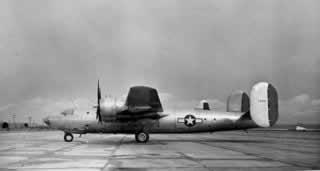 Consolidated XB-32 Dominator 41-141 with twin-tail |
The U.S. Army Air Force (USAAF) envisioned, even before the start of World War II, a replacement bomber for the Boeing B-17 Flying Fortress and the Consolidated B-24 Liberator with higher speed, longer range, more bomb load and more defensive armament.
Thus, in 1939, the USAAF issued specifications for a super heavy bomber, and in 1940, issued contracts for preliminary design to four major aircraft companies. These aircraft were designated as Boeing XB-29, Lockheed XB-30, Douglas XB-31 and Consolidated XB-32. The XB-29 was chosen as the winner.
B-32 Dominator Design
The Consolidated B-32 Dominator was a four-engined heavy bomber ordered by the Army Air Force at the same time as the Boeing B-29 Superfortress. In reality, the B-32 was a fall-back aircraft in the event that the complex, technology-laden B-29 did not meet its expectations as the nation's premier heavy bomber of World War II.
The Dominator's original design was similar to Consolidated's existing bomber, the B-24 Liberator, in that it used twin fins and a large Davis-type wing; but it featured with a longer, rounder fuselage and a rounded nose.
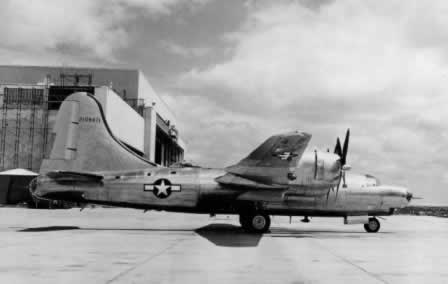 Consolidated B-32-1-CF Dominator (S/N 42-108471) |
The first B-32 mockups were built in December of 1940, a year before the Japanese attack on Pearl Harbor. The first XB-32 airplane was completed on September 1, 1942, six months behind schedule. Mechanical problems such as engine fires and collapsed landing gears plagued the testing of the aircraft. Although a contract was awarded to Consolidated for the production of 300 B-32s, some in the USAAF were in favor of cancellation of the entire program.
Although the B-32 was designed to the same specifications as the Boeing B-29, considerably more development was necessary by Consolidated to meet the USAAF's specifications. Pressurization and remote control of the gun turrets were abandoned and the twin-ruddered B-24-type tail was replaced in 1944 by a very large B-29-type single fin and rudder.
The B-32 was powered by four Wright R-3350-23 Duplex Cyclone 18-cylinder air-cooled radial piston engines with two turbochargers. The aircraft included space for up to 10 crew members, similar to Consolidated's B-24 Liberator.
By 1944 testing of the three B-32 prototypes had progressed to the point that the USAAF placed orders for over 1,500 Dominators. The first B-32 aircraft were completed in September of 1944, but production delays at Consolidated persisted.
During the design, development and production of the Dominator, its creator, the Consolidated Aircraft Company, merged in 1943 with the Vultee Aircraft Company. The resulting company became to be "Convair" (first unofficially, and then officially).
B-32 Dominator Specifications
Armament: 10 .50-cal. machine guns plus 20,000 lbs. of bombs (maximum)
Engines: Four Wright R-3350-23 Cyclone radials of 2,200 hp each (takeoff power)
Maximum speed: 357 mph at 30,000 ft.
Cruising speed: 290 mph
Range: 3,000 miles with 10,000 lbs. bomb load
Service ceiling: 30,700 ft.
Span: 135 ft. 0 in.
Length: 82 ft. 1 in.
Height: 32 ft. 2 in.
Weight: 100,000 lbs. (design gross weight)
Crew: 10
The B-32 Dominator Bomber in World War II
In the end, the B-32's testing and production problems resulted in limited availability, and consequently the bomber saw little action during WWII. An airplane conceived in 1939 was not ready for war action until mid-1945. The success of the B-29 Superfortress also gave lesser importance to the B-32 program.
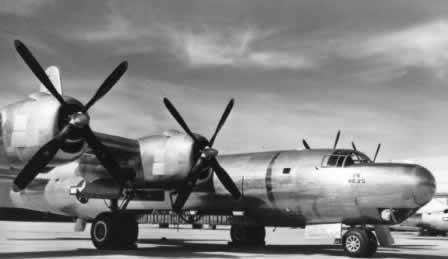 Consolidated TB-32 Dominator at Hickam Field, Hawaii |
The Dominator was built in small numbers and used in only a very few combat actions during the last few weeks of World War II. The 386th Bomb Squadron completed B-32 transition in July of 1945 and flew six operational combat missions before the end of the war. Following the August 9, 1945, bombing of Nagasaki, the 386th conducted photo reconnaissance missions and were attacked by flak and Japanese fighters. Two Dominators were damaged.
The last B-32 combat mission was also for photo reconnaissance and was completed on August 28, 1945. The 386th Bomb Squadron was ordered to cease combat operations two days later. Cancellation of the B-32 program came on September 8, 1945, and production of Dominators was halted on October 12.
B-32 Bomber Production Numbers
At the time of cancellation of the contract by the USAAF, Consolidated Fort Worth had produced 74 B-32s and 40 TB-32s, and San Diego had built one aircraft.
A total of 300 B-32s were ordered, but only 118 were delivered to the USAAF. A total of 130 were flyable, and 170 more cancelled.
Orders for an additional 1,099 B-32-CFs and 499 B-32-COs were cancelled after VJ-Day.
The table shown below represents a recap of B-32 Dominator production by model, and by manufacturing plant. Numbers represent our best research on the subject; there are minor variations in numbers reported by other sources and outlets.
B-32 Model |
Consolidated San Diego (CO) |
Consolidated Fort Worth (CF) |
Total Number Built |
| XB-32 | 3 |
0 |
3 |
| B-32 | 1 |
74 |
75 |
| TB-32 | 0 |
40 |
40 |
| TOTAL | 4 |
114 |
118 |
Disposal and Scrapping of the B-32 Dominator after World War II
After VJ-Day, the surviving B-32 aircraft were ordered to return to the United States for storage. Flyable aircraft at Consolidated factories were flown directly to scrap yards at Kingman Army Airfield in Arizona, Walnut Ridge in Arkansas and Davis-Monthan in Tucson. All partially built B-32s were scrapped at the Consolidated assembly plant in Fort Worth.
By 1947, most of B-32 airplanes that had been sent to the disposal centers had been scrapped. The last remaining B-32 was scrapped in the summer of 1949.
B-32 Surviving Aircraft
B-32-1-CF S/N 42-108474 was designated for display at the Air Force Museum, but was unaccountably declared excess and scrapped at Davis-Monthan AFB in Tucson in August of 1949.
Thus, no surviving B-32 airframes exist today. Only a small inventory of B-32 parts such as gun turrets remain in existence.
USAF B-32 Dominator Photos
Consolidated TB-32 Dominator assembly line in Fort Worth, Texas |
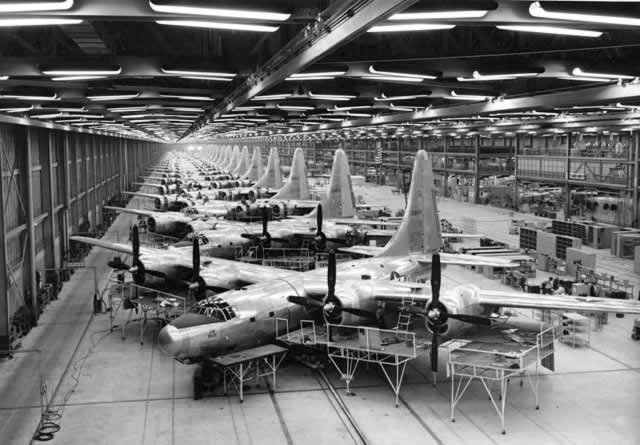 |
Consolidated B-32-1-CF (S/N 42-108471) |
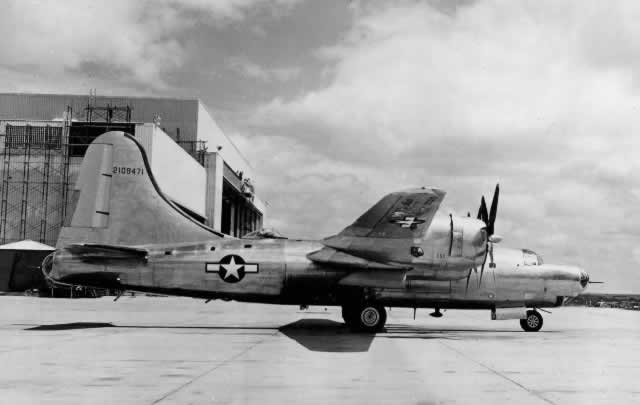 |
Consolidated B-32 Dominator in flight |
 |
Consolidated TB-32 Dominator in flight |
 |
Consolidated TB-32 Dominators parked on apron |
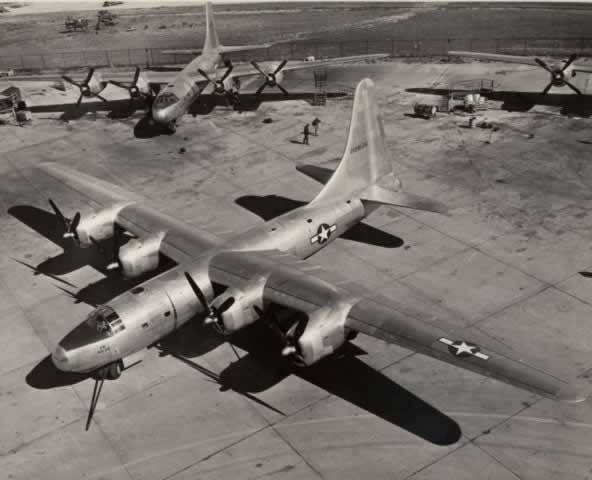 |
Convair B-32 Dominator bombers stored at Walnut Ridge, Arkansas, after World War II (Photo by the Walnut Ridge Army Flying School Museum) |
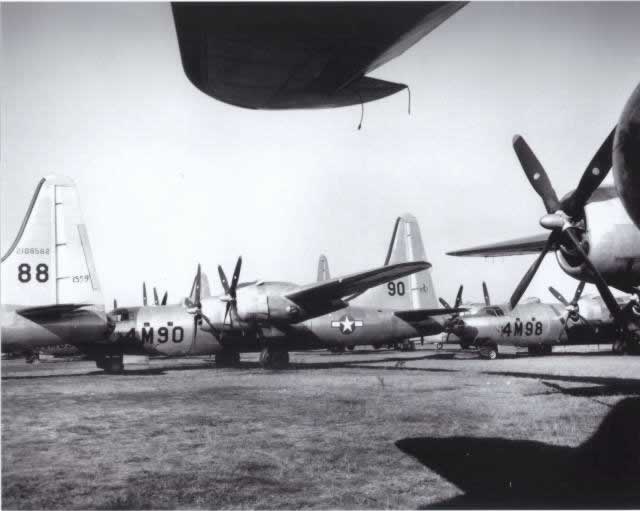 |
Convair B-32 Dominator bombers stored at Walnut Ridge, Arkansas, after World War II (Photo by the Walnut Ridge Army Flying School Museum) |
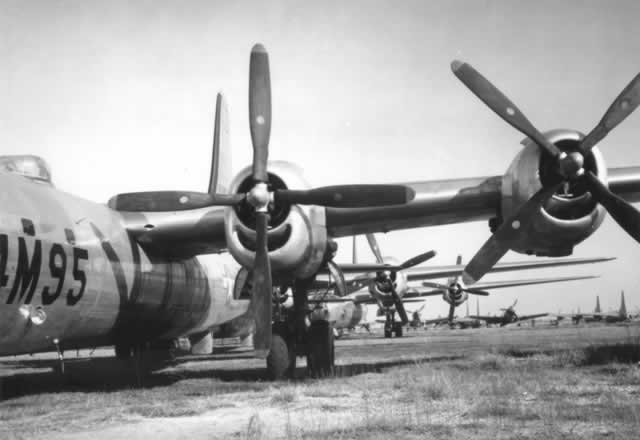 |
Convair B-32 Dominator bombers stored at Walnut Ridge, Arkansas, after World War II (Photo by the Walnut Ridge Army Flying School Museum) |
 |
Convair B-32 Dominator bombers stored at Walnut Ridge, Arkansas, after World War II (Photo by the Walnut Ridge Army Flying School Museum) |
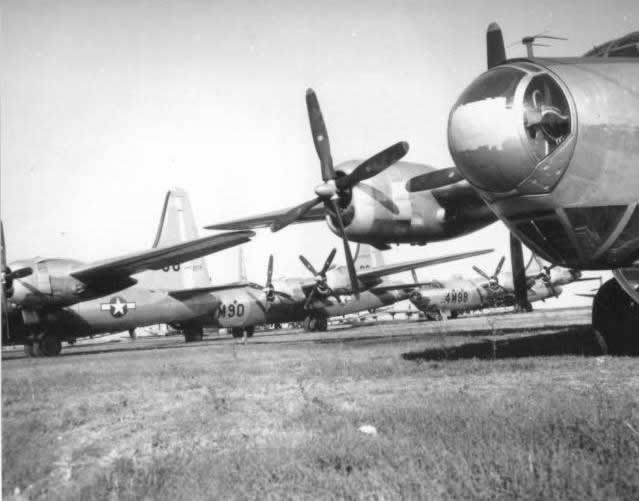 |

